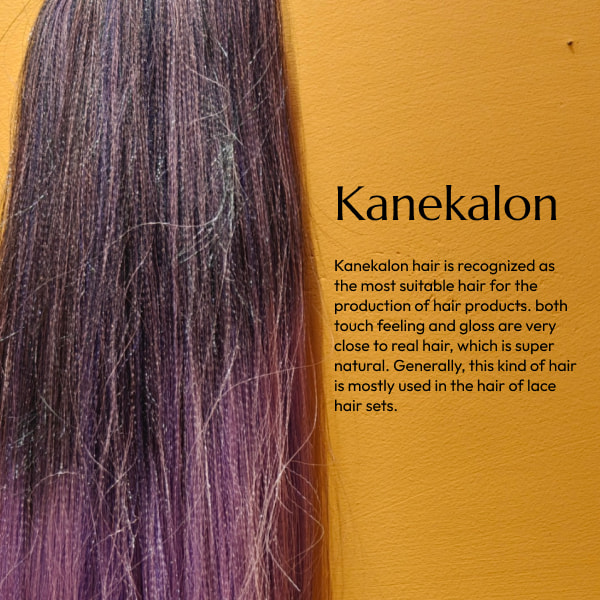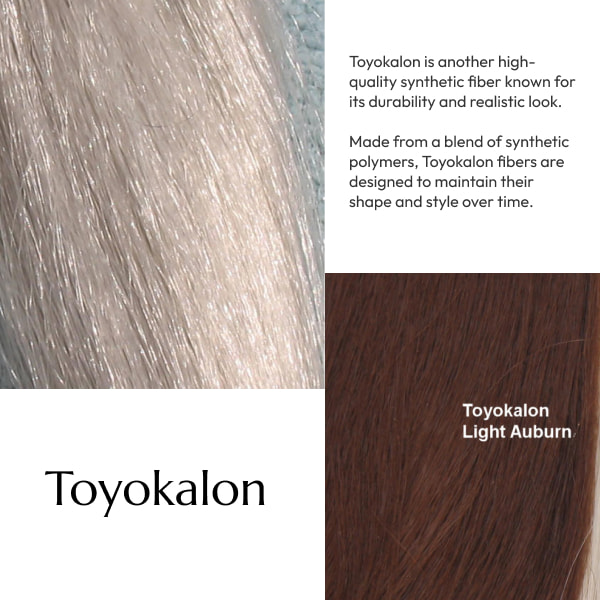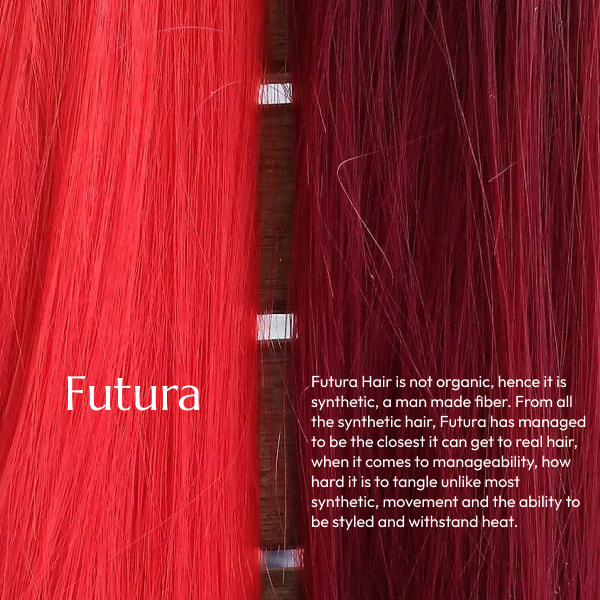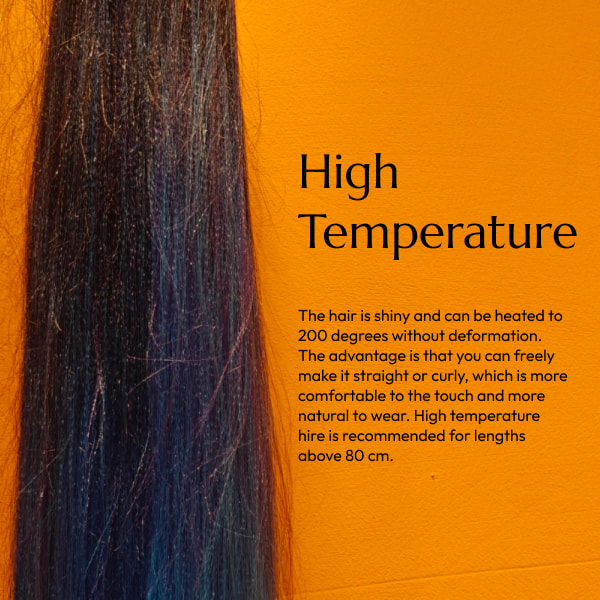




What material is synthetic hair made of?
Introduction
Synthetic hair has become increasingly popular due to its affordability and low-maintenance qualities. But what exactly is synthetic hair made of? Understanding the materials used in synthetic hair production can help you make an informed choice when selecting wigs or hair extensions. This article delves into the types of fibers used in synthetic hair and their unique properties.
Materials Used in Synthetic Hair
Types of Synthetic Fibers
Synthetic hair is made from a variety of man-made fibers, each designed to mimic the appearance and texture of natural human hair. The most common synthetic fibers used in hair production include:
- Kanekalon
- Toyokalon
- Futura
- High-Temperature Synthetic Fibers
Kanekalon
Composition and Properties
Kanekalon is a high-quality synthetic fiber known for its natural look and soft texture. Made from modacrylic fiber, Kanekalon is designed to mimic the appearance and feel of real human hair. It is often used in high-end synthetic wigs and extensions due to its superior quality.
Advantages
- Natural Appearance: Kanekalon fibers closely resemble the texture and sheen of human hair, providing a realistic look.
- Softness: These fibers are soft to the touch, enhancing the comfort and natural feel of synthetic hair products.
- Heat Resistance: Kanekalon fibers can withstand low levels of heat, allowing for some styling flexibility.
Limitations
- Heat Sensitivity: While Kanekalon fibers can handle low heat, they are not suitable for high-heat styling tools like curling irons or flat irons.
- Durability: Kanekalon fibers can be prone to frizz and tangling over time, especially with frequent wear.
Toyokalon
Composition and Properties
Toyokalon is another high-quality synthetic fiber known for its durability and realistic look. Made from a blend of synthetic polymers, Toyokalon fibers are designed to maintain their shape and style over time.
Advantages
- Durability: Toyokalon fibers are highly durable and less prone to tangling and frizzing, making them ideal for long-term use.
- Natural Look: These fibers have a natural sheen and texture, closely resembling human hair.
- Style Retention: Toyokalon fibers hold their style well, even after washing and regular use.
Limitations
- Heat Sensitivity: Like Kanekalon, Toyokalon fibers are sensitive to high heat and can melt or become damaged if exposed to high temperatures.
- Flexibility: While durable, Toyokalon fibers offer limited flexibility in terms of restyling.
Futura
Composition and Properties
Futura is a type of heat-resistant synthetic fiber made from a blend of modified acrylics. Futura fibers are designed to withstand higher temperatures, providing greater styling versatility compared to other synthetic fibers.
Advantages
- Heat Resistance: Futura fibers can withstand higher temperatures, allowing for more styling options, including curling and straightening with heat tools.
- Natural Feel: These fibers are soft and mimic the texture of human hair, providing a realistic look and feel.
- Durability: Futura fibers are resistant to frizzing and tangling, making them durable and easy to maintain.
Limitations
- Cost: Futura fibers can be more expensive than other synthetic options due to their advanced heat-resistant properties.
- Maintenance: While durable, Futura fibers still require proper care and maintenance to maintain their appearance.
High-Temperature Synthetic Fibers
Composition and Properties
High-temperature synthetic fibers are specially formulated to withstand higher levels of heat compared to traditional synthetic fibers. These fibers are made from a blend of advanced polymers that provide greater heat resistance.
Advantages
- Styling Flexibility: High-temperature synthetic fibers can be styled with heat tools, offering more versatility in achieving different looks.
- Natural Appearance: These fibers often have a natural sheen and texture, closely resembling human hair.
- Durability: High-temperature synthetic fibers are durable and resistant to tangling and frizzing.
Limitations
- Cost: These fibers tend to be more expensive due to their advanced properties.
- Availability: High-temperature synthetic fibers may not be as widely available as other synthetic options.
Comparing Synthetic Fibers to Human Hair
Appearance and Texture
- Synthetic Hair: Synthetic fibers, especially high-quality ones like Kanekalon and Toyokalon, can closely mimic the appearance and texture of human hair. However, lower-quality synthetic hair may look less natural and have a plastic-like sheen.
- Human Hair: Human hair wigs and extensions offer the most natural look and feel, blending seamlessly with your own hair.
Styling Versatility
- Synthetic Hair: Most synthetic hair cannot be heat-styled or chemically treated, limiting styling options. Heat-resistant fibers like Futura offer more flexibility but still have some limitations.
- Human Hair: Human hair can be styled, colored, and treated like natural hair, providing endless styling possibilities.
Durability
- Synthetic Hair: Synthetic hair generally has a shorter lifespan, lasting about 4 to 6 months with regular use. High-temperature fibers may last longer but still fall short of human hair’s durability.
- Human Hair: With proper care, human hair wigs and extensions can last over a year, offering greater durability and longevity.
Maintenance
- Synthetic Hair: Synthetic hair is low-maintenance and retains its style even after washing. However, it can be more difficult to detangle and may require specific care products.
- Human Hair: Human hair requires regular washing, conditioning, and styling, similar to your natural hair. It may also need occasional treatments to maintain its shine and softness.
Your questions answered
FAQs
Can I curl or straighten synthetic hair?
Most synthetic hair cannot be heat-styled, but heat-resistant fibers like Futura can withstand low to moderate heat for styling.
How do I care for synthetic hair?
Use products specifically designed for synthetic hair and avoid regular shampoos and conditioners. Gently detangle with a wide-tooth comb and store properly to prevent tangling.
Is synthetic hair suitable for everyday wear?
Yes, high-quality synthetic hair can be suitable for everyday wear, especially if it is durable and properly maintained. However, human hair may be a better option for long-term daily use.
Can synthetic hair be dyed?
No, synthetic hair cannot be dyed as the fibers do not absorb color like human hair. Attempting to dye synthetic hair can damage the fibers.
What is the lifespan of synthetic hair?
Synthetic hair typically lasts about 4 to 6 months with regular use. Heat-resistant synthetic fibers may have a slightly longer lifespan but still do not last as long as human hair.
Which synthetic fiber looks the most natural?
High-quality fibers like Kanekalon and Toyokalon offer a natural appearance and texture, closely resembling human hair.